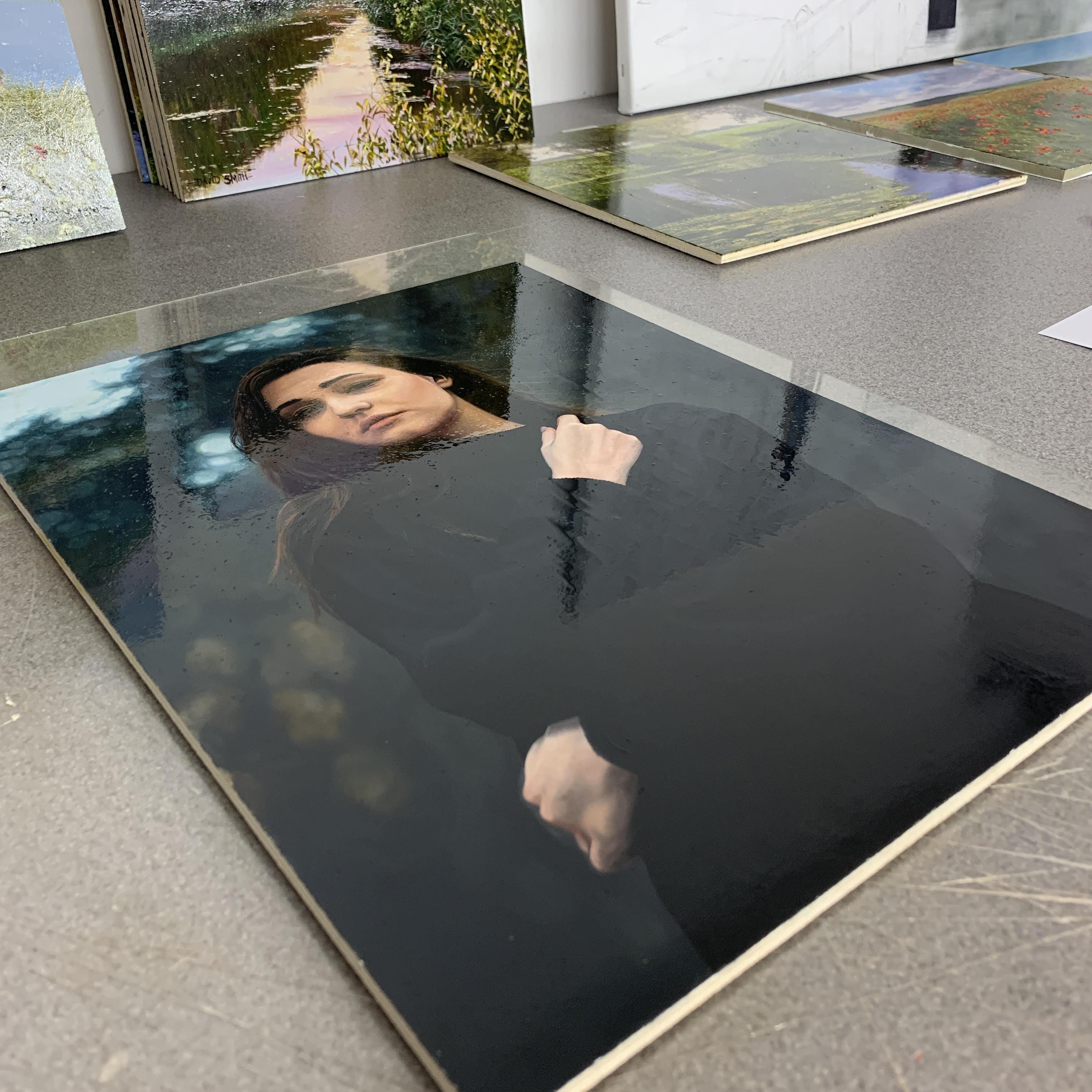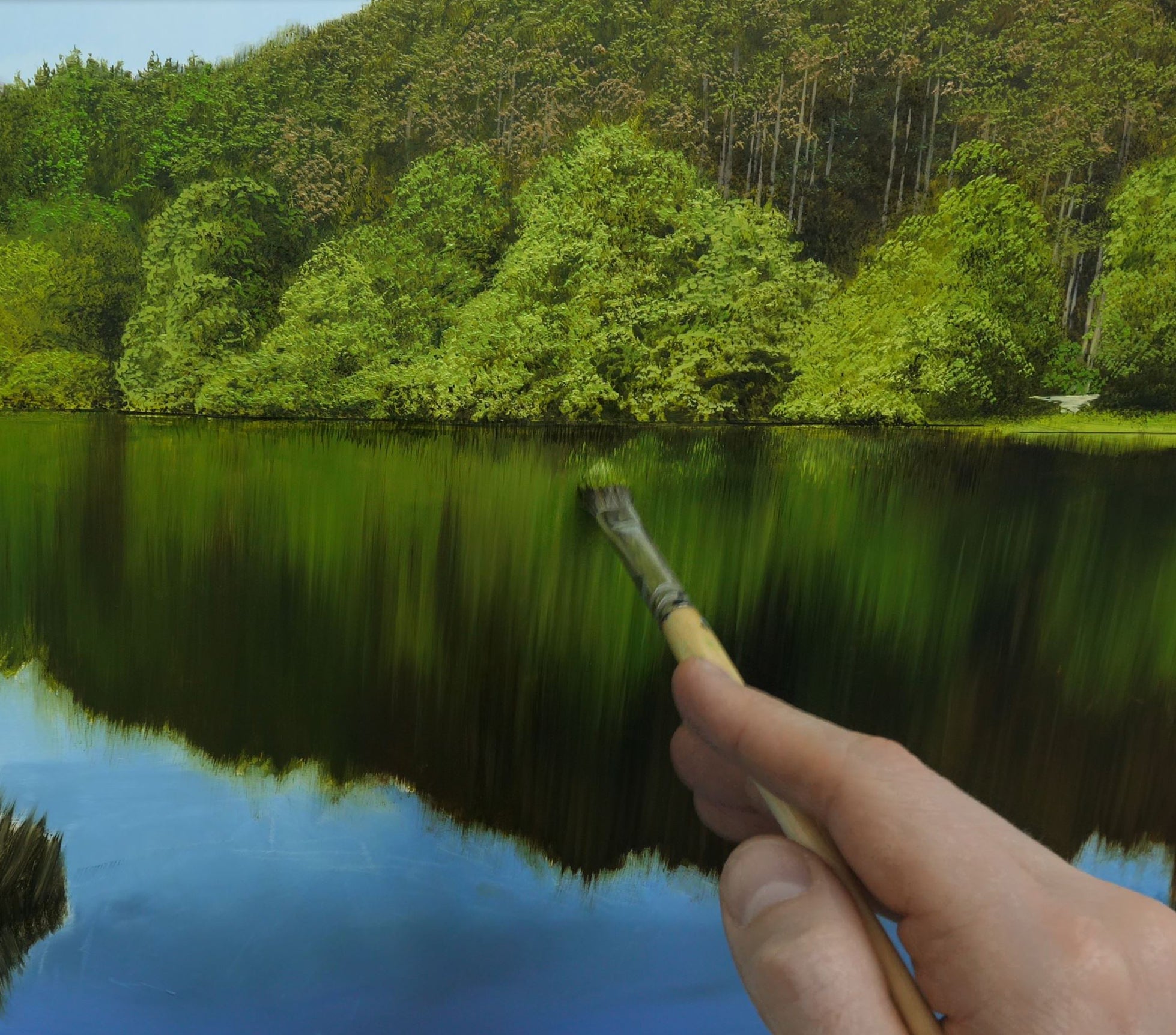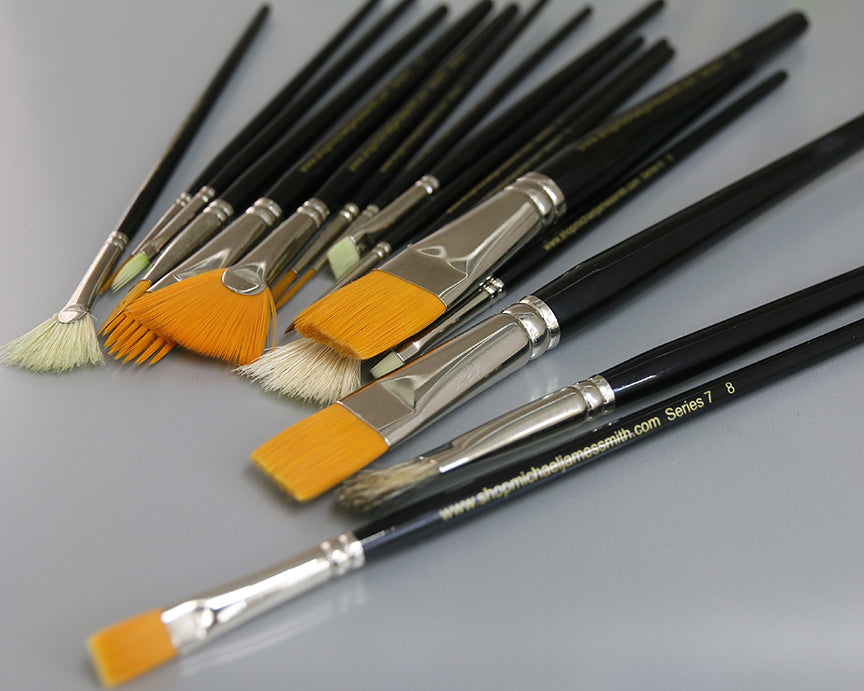
How to varnish an oil painting
How to varnish an oil painting

After all the hard work and time that you’ve spent completing your oil painting, you’ll want to make sure that it’s protected. You may think that a glass frame would offer the most protection but in fact, they are rarely used for oil paintings. For most oil, acrylic and alkyd paintings on canvas, panel or board, it is not necessary to frame under glass. However, if your oil painting was done on paper or thin card, glass may help to provide support for the surface.
The easiest way to protect your oil painting is with varnish. Varnish provides two main benefits:
- It protects the finished painting from years of things that might settle on a painting. i.e. things in the air from cooking, people smoking, dust etc. If the painting ever becomes “dirty” the varnish can be removed and reapplied
- Varnishing brings all the colours in your oil painting back to life because some hues of paint can dry looking dull. It will also ensure that your oil painting stays looking vibrant for longer.
I prefer to use gloss picture varnish by Jackson’s for my oil paintings, as I think that it brings out the details of my paintings better. You can purchase the same varnish that I use here. If you choose to use another varnish, I recommend selecting one that is clear (not yellow) and of artist quality for the best results. It’s also advisable to find a varnish that is flexible, otherwise it could crack over time and damage the surface of the oil painting.
The most important part about varnishing an oil painting is knowing when to do it. Oil paint dries from the outside-in, so although it may appear dry to the touch, it may still be drying or curing on the inside. Oil paint dries by oxidation, so if you put the varnish on too soon, you will cut off the oxygen that allows the paint to dry.
Some people recommend waiting for between 6-12 months before varnishing an oil painting but the time it takes to dry is dependent upon a number of factors:
- How thickly or thinly the oil paint is applied
- Which kind of oil paint is being used
- The temperature where the oil painting is drying
- How humid the air is
- What type of medium was or was not used
I typically wait a week before I apply gloss varnish. This may seem too soon for some, but my method of painting makes my oil paintings dry very quickly. I paint very thinly throughout, using acrylic paint for blocking in, followed by Winsor and Newton’s Fast Drying Alkyd Oil Paints, together with white spirit and Winsor and Newton Liquin Original for my mediums. Each of these aids my paintings to dry faster.
For paintings that use regular oils, with paint applied thickly, or where slower drying mediums have been used, a greater time should be allowed before varnishing. Typically, 6-months to 1-year. If you would like to put a varnish on to your oil painting sooner, you can use artist’s retouch varnish. This places a temporary coat onto the oil painting which will help to protect it and revive the colours. This type of varnish is breathable, so it allows the painting to continue drying. Another alternative is Gamvar gloss varnish by Gamblin. This varnish breathes and removes the need for retouch varnish. It can easily be removed from the oil painting when needed, using Gamsol by Gamblin (similar to white spirit).
The Varnishing Process
- You will need to use a good quality varnishing brush that is flat and wide, soft and tightly packed. The last thing that you want is a rogue brush hair coming off onto your masterpiece.
- Lay the oil painting down onto a dust free and clean surface. Do not varnish the painting while it is vertical. Shut any windows and doors as a precaution.
- Apply the varnish to the oil painting in one to three thin coats rather than one thick coat. Use long even strokes moving up and down and overlapping slightly. Once you leave an area, avoid going back to it.
- Allow the varnish to dry for 24-hours. If a second coat is required, repeat the process again.
As soon as your oil painting is varnished and completely dry, you’re ready to hang it for everyone to enjoy.
Thinking about selling your oil paintings? Find out how I finish and package my oil paintings ready to send to galleries in the video below.

